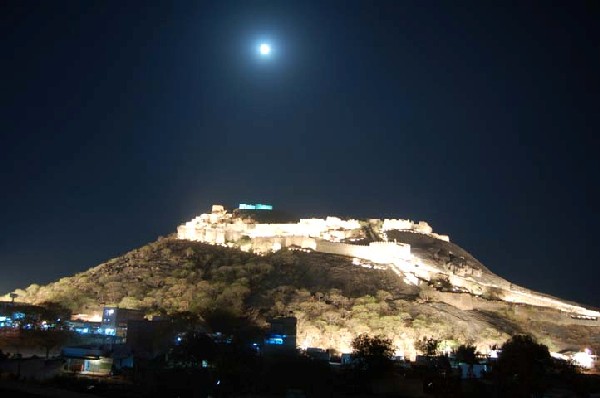Bhongir Fort
Filed under Attractions

Sometimes, there are places that are relative unknowns that are just as awesome and breathtaking as those that get plastered all over the news and tourist sites. That is why when someone goes on a vacation to some foreign place, an itinerary set by a travel agency or tourist company isn’t always the best choice. There is still much to be said about discovering less well-known attractions in out-of-the-way places; it harkens back to the time when there was magic in discovering something that is relatively low profiled. Case in point: Bhongir Fort in the municipality of Bhongir, in Hyderabad.
The fort is built upon a single rocky hill in Bhongir, a town in Telangana, located in the Nalgonda district of the state. It is located some 48 kilometers away from Hyderabad. The Western Chalukya ruler, Tri-bhuvana-malla Vikram-aditya VI, built the fort from one single monolithic rock in the 12th century; as a result, the fort was originally named Tribhuvanagiri, after him. Gradually, across the centuries, the name metamorphosed into Bhuvanagiri (or Bhuvana’s Hill), and eventually, into Bhongir, its present name. The hill upon which the fort itself is built is about 500 feet high, and spread to about 40 acres of land.
Considered practically impregnable by invading armies then, the fort has a unique egg-shaped construction with two entry points that are protected by huge rocks. A moat encircles the fort and the place itself has a huge underground chamber, an armory, stables, and trap doors, among others. These can still be seen even now, which makes for some fascinating viewing for visitors. The citadel located on the top of the hill gives a wonderful bird’s-eye view of the surrounding area. According to legend, Bhongir Fort once had an underground passage that leads directly to Golconda Fort. This, of course, has never been proven.
Bhongir Fort held its own against enemy armies but by the 15th century, with the advent of gunpowder, cannons had reduced its strategic importance. It finally went to the Bahmani Sultans who tried to renovate it, and thus, gave it an Islamic style. It became a seat to the local governor, and a prison for Qutub Shahi throne pretenders. By the 18th century, the fort has fallen into decay, and until recently, it had just remained a silent fortification ruin, covered in its long but mysterious past.


Comments